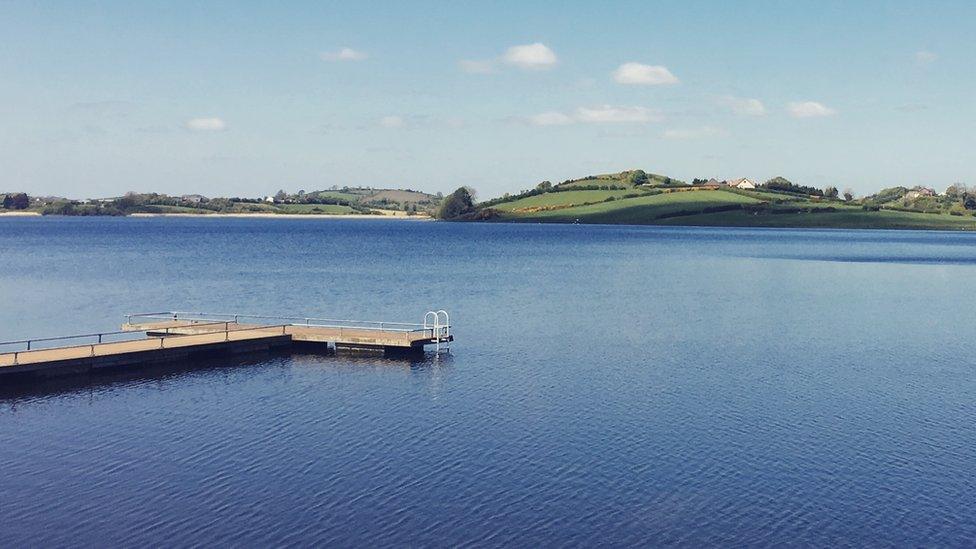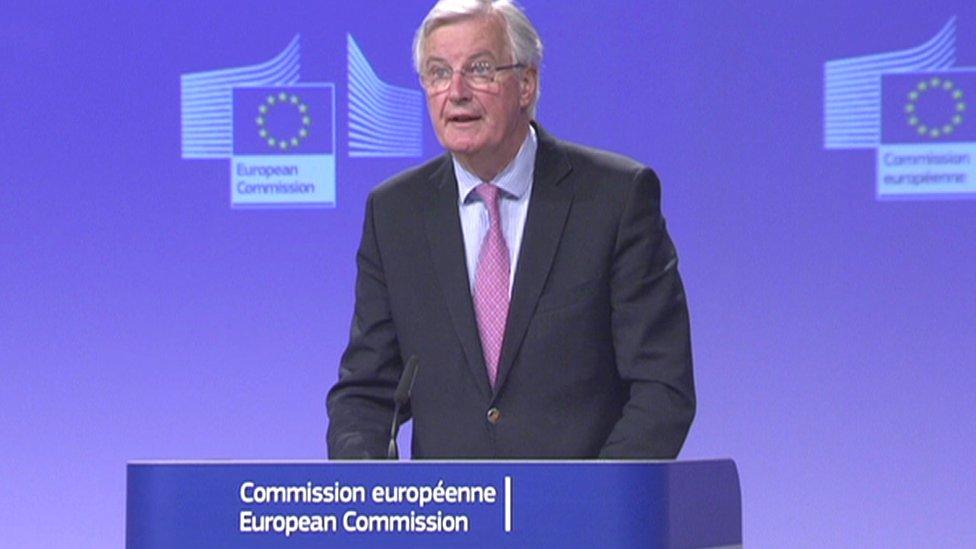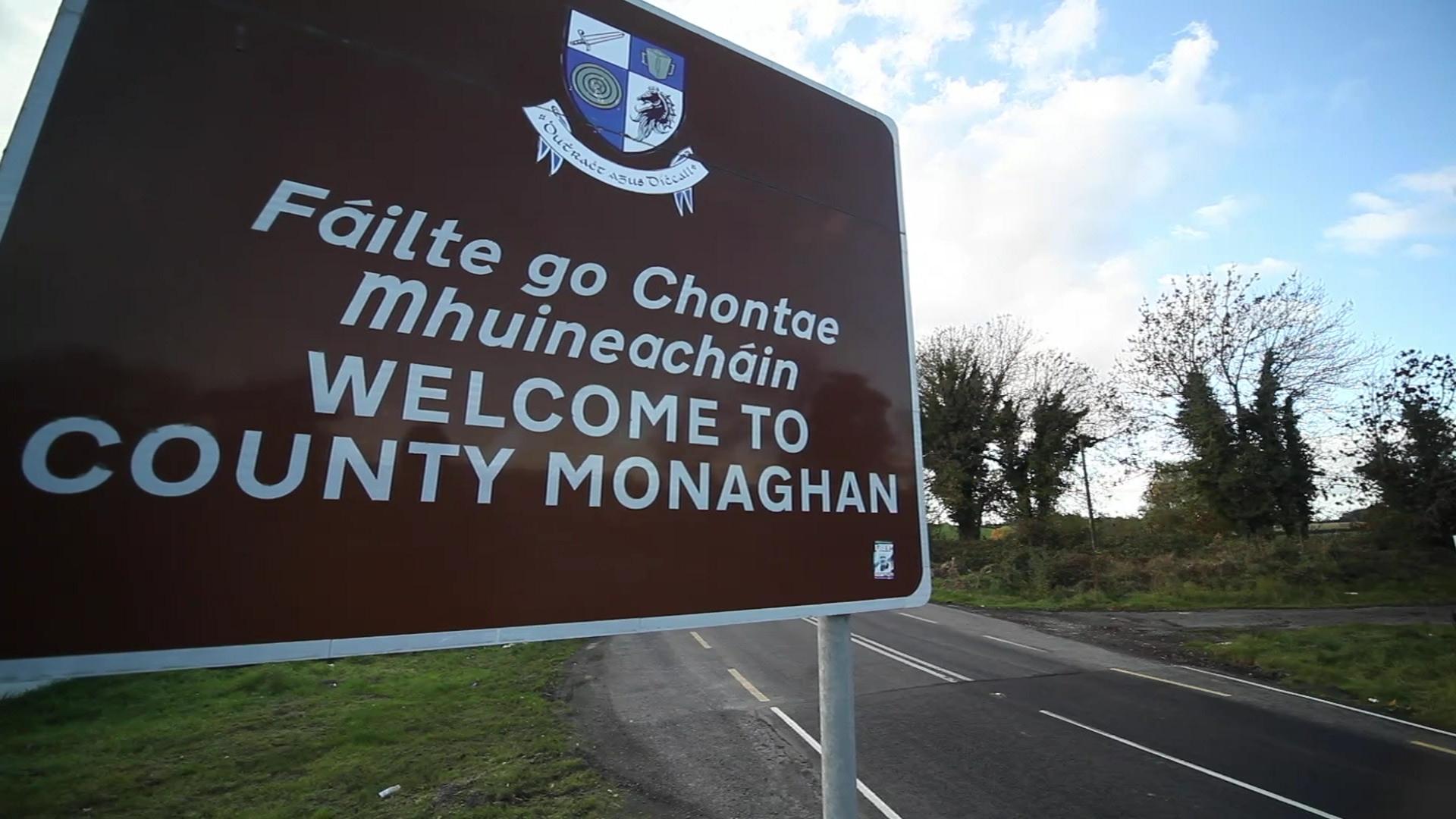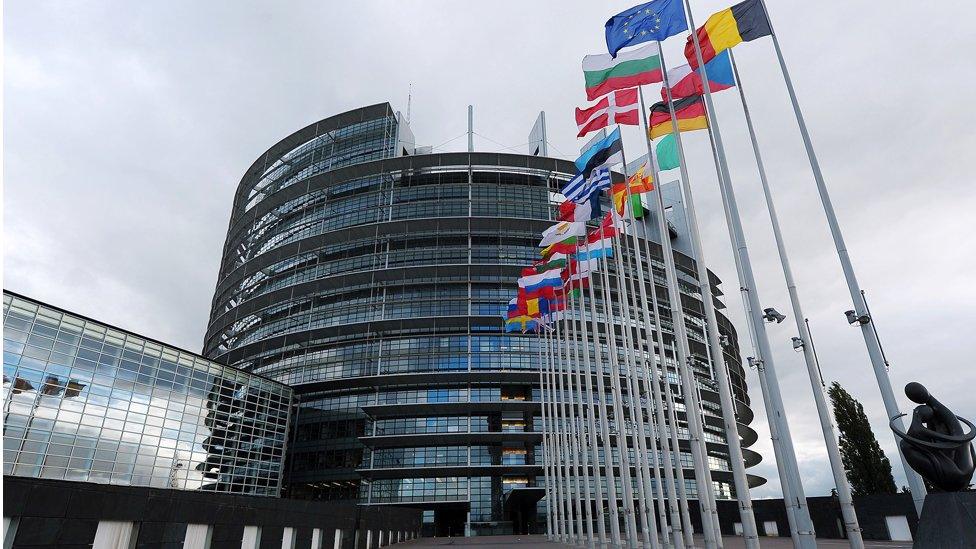Brexit's hard Irish border questions
- Published
- comments

Still open water: Lough Ross on the Northern Ireland border
The rolling hills and peaceful loughs of County Armagh seem an unlikely flashpoint in the looming Brexit negotiations.
But the border between Northern Ireland and the Republic of Ireland, which runs through farms, roads, hedges and even houses has emerged as a crucial issue in the talks - and one with deep implications for the Northern Irish economy.
The border now exists virtually in name only, with the only visible sign when crossing between the countries the change in speed limit signs from miles per hour to kilometres.
Talk to young people in the county towns and they are incredulous at the talk of a hard border post-Brexit.
Their parents, however, are more wary. They know that only a few decades ago the border was extremely hard, with watchtowers on hills, troops searching lorries and queues of cars waiting to cross.
Peace process
The peace process dismantled the watchtowers and let the troops leave.
Since, the cross border economy has flourished.
"It's two countries, but really the economy of the island of Ireland is, in most respects, one economy," said Ellvena Graham, vice-president of the Northern Irish Chambers of Commerce.
Companies have set up close to the border to make use of the good transport links to Dublin, and unemployment rates in the border counties have fallen from about 25% at the height of the Troubles to about 3% - lower than the national average.
The cross-border trade is particularly strong in farming; one-third of Northern Ireland's milk production is handled in the Republic, while the same proportion of Irish pigs cross the border for processing in Northern Irish factories.
'Seamless' border
Fane Valley, a Northern Ireland farmers co-operative founded in 1903, has annual sales in excess of £500m and extensive operations on both sides of the border. Trevor Lockhart, the chief executive says the border is "seamless, and we would like to keep it that way".
"The industry is very concerned about a hard border and what that might mean. It would set the industry back 25 years."
Contingency planning was already underway, Lockhart said, with some big decisions likely to be taken towards the end of next year - before the official Brexit deadline of March 2019.
Lockhart said companies like his needed to make their plans now, even though there was no clarity on the eventual status of the border.

"We can't take it for granted. We are trying to maximise sales in domestic markets - the economic stakes are so high that we can't leave it to chance. We can't just hope it will be alright on the night," he said.
Immigration
The other Brexit-related threat to Northern Irish agriculture is limits on immigration. About 65% of all workers in the industry are migrants, most of those EU nationals.
Lockhart's hopes - and those of other Irish businessmen, north and south - may clash with the hard realities of Brexit, and the promise that British politicians will take back control of borders and control immigration.
Some academics and economists have suggested that the eventual solution may be to recognise the porous nature of the Northern Ireland border and shift the hard frontier back to airports and ports in England, Scotland and Wales.
This would leave Northern Ireland in the special position of being part of the United Kingdom, with -bizarrely - an open border with the European Union.
Such a solution, anathema to hard-Brexiteers, might make Northern Ireland a sought-after business location, one enjoying, by accident of history, the best of both worlds.
- Published3 May 2017

- Published2 November 2016

- Published5 April 2017
